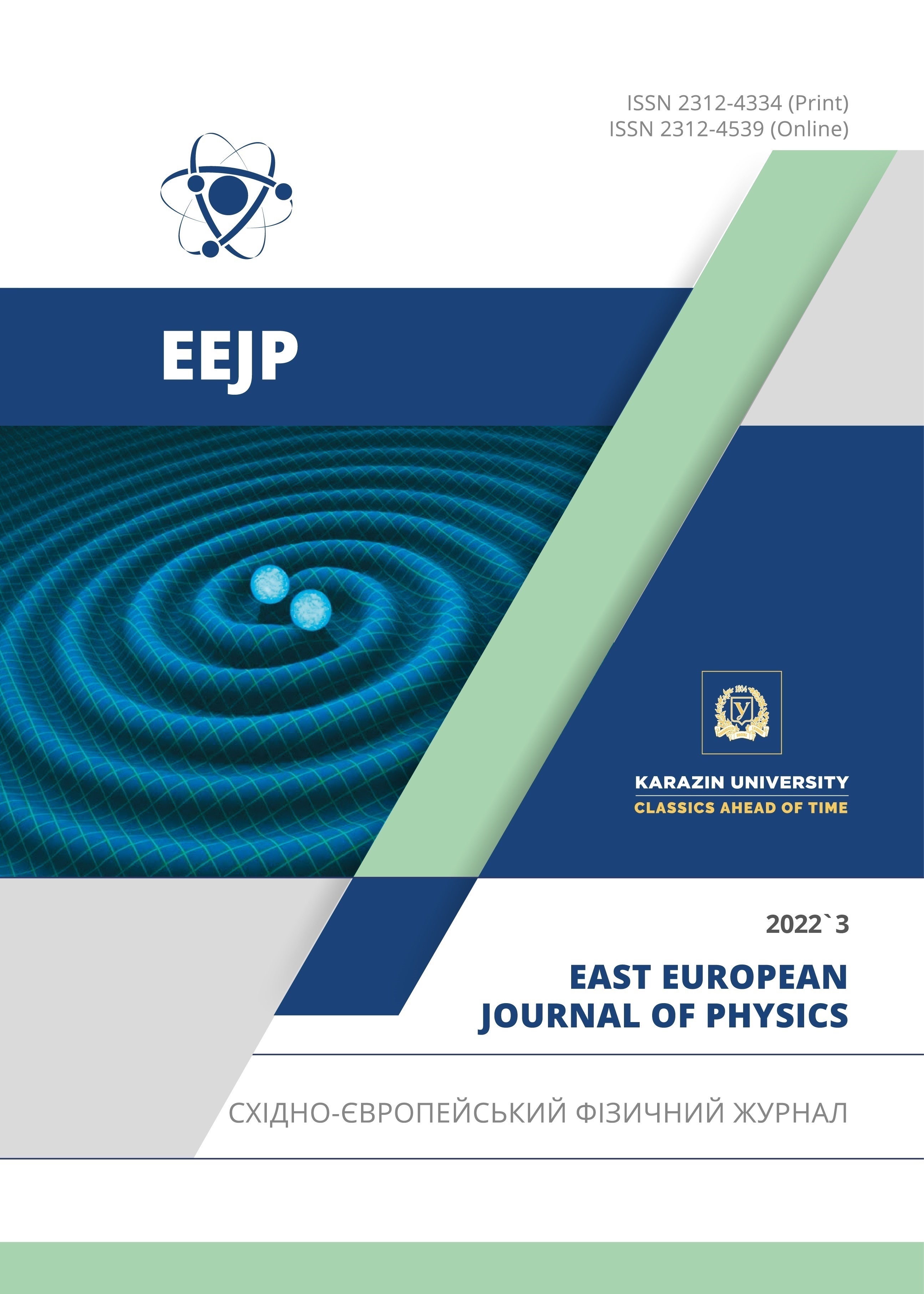On the Mechanisms of Formation of Density Cavities under Instability of Intense Langmuir Oscillations in a Plasma
Abstract
The paper considers the instability of intense Langmuir oscillations in nonisothermal (Zakharov's model) and cold (Silin's model) 1D plasma. The main attention is paid to the formation of plasma density caverns in the hydrodynamic and hybrid (electrons are described hydrodynamically, ions are described by model particles) representations. In the hydrodynamic representation, with a small number of spectrum modes, large-scale plasma density caverns are observed, which rapidly deepen. This process is supported by the appearance of small-scale perturbations, and phase synchronization of the Langmuir waves of the instability spectrum is observed. This phase synchronization of the spectrum modes is quite capable of fulfilling the role that was previously proposed to be given exclusively to the effect of extrusion of particles from the cavity by the field. In hybrid models, in the region of consideration, ions are described by model particles, the number of which in the one-dimensional case 104-5*105 (which in the three-dimensional case corresponds to the number of particles 1012-1014). The initial spectrum of perturbations is very wide and rather intense, which leads to an explosive growth of perturbations in the Zakharov model and a rapid development of instability in the Silin model. In this case, in the developed instability regime, the formation of many small-scale plasma density caverns is observed. It is the presence of this small-scale modulation due to the Fermi effect that quickly forms the normal distribution of ions over velocities. In this case, the effect of particle heating due to Landau damping loses its primacy. It is shown that the caverns practically do not change their position; phase changes for the spectral components of the plasma density were not observed. Only individual small-scale caverns demonstrate dynamics similar to the development of caverns in the hydrodynamic representation.
Downloads
References
V.E. Zakharov, “Collapse of Langmuir waves”, Soviet Physics JETP, 35(5), 908 (1972), https://www-thphys.physics.ox.ac.uk/people/AlexanderSchekochihin/notes/PlasmaClassics/zakharov72.pdf
E.A. Kuznetsov, “On the averaged description of Langmuir waves in plasma,” Sov. Plasma Phys. The science. 2(2), 327 (1976).
A.I. Dyachenko, et al “Two-dimensional Langmuir collapse and two-dimensional Langmuir cavitons”, JETP Letters. Science, 44, 504 (1986).
A.Y. Wong, and P.Y. Cheung, Phys. Rev. Lett. 52(14), 1222 (1984), https://doi.org/10.1103/PhysRevLett.52.1222
V.V. Chernousenko, V.M. Kuklin, and I.P. Panchenko, The structure in nonequilibrium media. In book: The integrability and kinetic equations for solitons, (Nauk. Dumka, Kyiv, 1990), pp. 472.
V.P. Silin, “Parametric resonance in plasma “, ZhETF, 48, 1679 (1965).
A.V. Kirichok, V.M. Kuklin, A.V. Pryimak, and A.G. Zagorodny, “Ion heating, burnout of the HF field and ion sound generation with the development of modulation instability of an intensive Langmuir wave in a plasma”, Physics of Plasmas, 22, 092118 (2015), https://doi.org/10.1063/1.4931058
K.L. Clark, G.L. Payne, and D.R. Nicholson, “A hybrid Zakharov particle simulation of ionospheric heating”, Phys. Fluids B Plasma Phys. 4(3), 708 (1992), https://doi.org/10.1063/1.860269
V.M. Kuklin, Selected chapters (theoretical physics), (V.N. Karazin KhNU, Kharkiv, 2021), pp. 244.
V.M. Kuklin, and S.M. Sevidov, “On the nonlinear theory of stability of intense oscillations of cold plasma”, Sov. Plasma Phys. 14(10), 1180 (1988).
O.V. Priymak, PhD Dissertation, “Mathematical models for describing the processes of modulation instabilities of an intense wave field”, Karazin Kharkiv University, 2020.
Copyright (c) 2022 Volodymyr M. Kuklin

This work is licensed under a Creative Commons Attribution 4.0 International License.
Authors who publish with this journal agree to the following terms:
- Authors retain copyright and grant the journal right of first publication with the work simultaneously licensed under a Creative Commons Attribution License that allows others to share the work with an acknowledgment of the work's authorship and initial publication in this journal.
- Authors are able to enter into separate, additional contractual arrangements for the non-exclusive distribution of the journal's published version of the work (e.g., post it to an institutional repository or publish it in a book), with an acknowledgment of its initial publication in this journal.
- Authors are permitted and encouraged to post their work online (e.g., in institutional repositories or on their website) prior to and during the submission process, as it can lead to productive exchanges, as well as earlier and greater citation of published work (See The Effect of Open Access).








